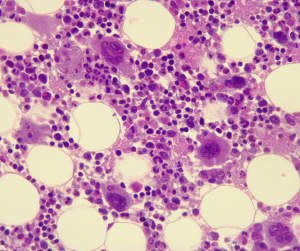Bone Marrow Aspirate Concentrate (BMAC) represents a groundbreaking advancement in the field of regenerative medicine, offering new possibilities for healing and recovery. Derived from the patient’s own bone marrow, BMAC therapy harnesses the natural healing abilities of stem cells and growth factors to repair damaged tissues, reduce inflammation, and alleviate pain. As researchers and clinicians continue to explore its potential, BMAC is becoming an increasingly popular option for treating a range of challenging musculoskeletal conditions, from chronic joint pain to severe sports injuries. This innovative treatment promises not just symptom relief but a potential restoration of function, making it a pivotal development in medical science’s ongoing quest to improve quality of life.
What is BMAC?
Bone Marrow Aspirate Concentrate (BMAC) is a concentrated form of bone marrow, which is rich in growth factors and stem cells. Bone marrow is the spongy tissue found inside bones, where blood cells are produced. It contains a high concentration of mesenchymal stem cells (MSCs), hematopoietic stem cells (HSCs), and other critical growth factors that play a key role in the healing and regeneration of tissues.
The process of obtaining BMAC involves aspirating marrow blood from the patient’s bone – typically the pelvis – which is then centrifuged to concentrate the marrow’s cellular components. This concentrate is then re-injected into the damaged or degenerative area, where it can facilitate repair and regeneration.

The Science Behind BMAC
The efficacy of BMAC stems from its rich mixture of mesenchymal stem cells, which have the ability to differentiate into a variety of cell types, including bone, cartilage, muscle, and fat. This versatility is particularly valuable in orthopedics, where these cells can contribute to the repair of damaged skeletal tissues. Additionally, BMAC contains growth factors that enhance the healing environment by stimulating local cells to proliferate and repair damage.
Clinical studies have shown promising results for BMAC in enhancing the healing of bones and soft tissues. For instance, in the treatment of critical bone defects and non-unions, BMAC has been shown to significantly improve healing rates. Similarly, its application in sports medicine, particularly in the treatment of tendon injuries and joint degeneration, has demonstrated improvements in pain and functionality.
Applications of BMAC
Orthopedic Conditions: BMAC is particularly beneficial in treating orthopedic conditions such as osteoarthritis. It helps in reducing pain and improving joint function by promoting the regeneration of cartilage. It is also used in treating fractures that are not healing properly (non-unions), where it can stimulate bone growth and accelerate healing.
Sports Injuries: Athletes often suffer from tendon injuries, such as tennis elbow or Achilles tendonitis. BMAC has been used successfully to treat these conditions by promoting the regeneration of tendon tissue, thus reducing recovery time and improving the strength and flexibility of the tendon.

The Procedure
The procedure to obtain and inject BMAC is minimally invasive and typically performed on an outpatient basis. The process starts with extracting bone marrow, usually from the iliac crest of the pelvis, using a needle and syringe. This procedure is done under local anesthesia to minimize discomfort.
The aspirate is then placed in a centrifuge, spinning to concentrate the stem cells and growth factors. The resulting concentrate is injected directly into the injured or affected area, guided by imaging techniques such as ultrasound or fluoroscopy to ensure precise placement.





